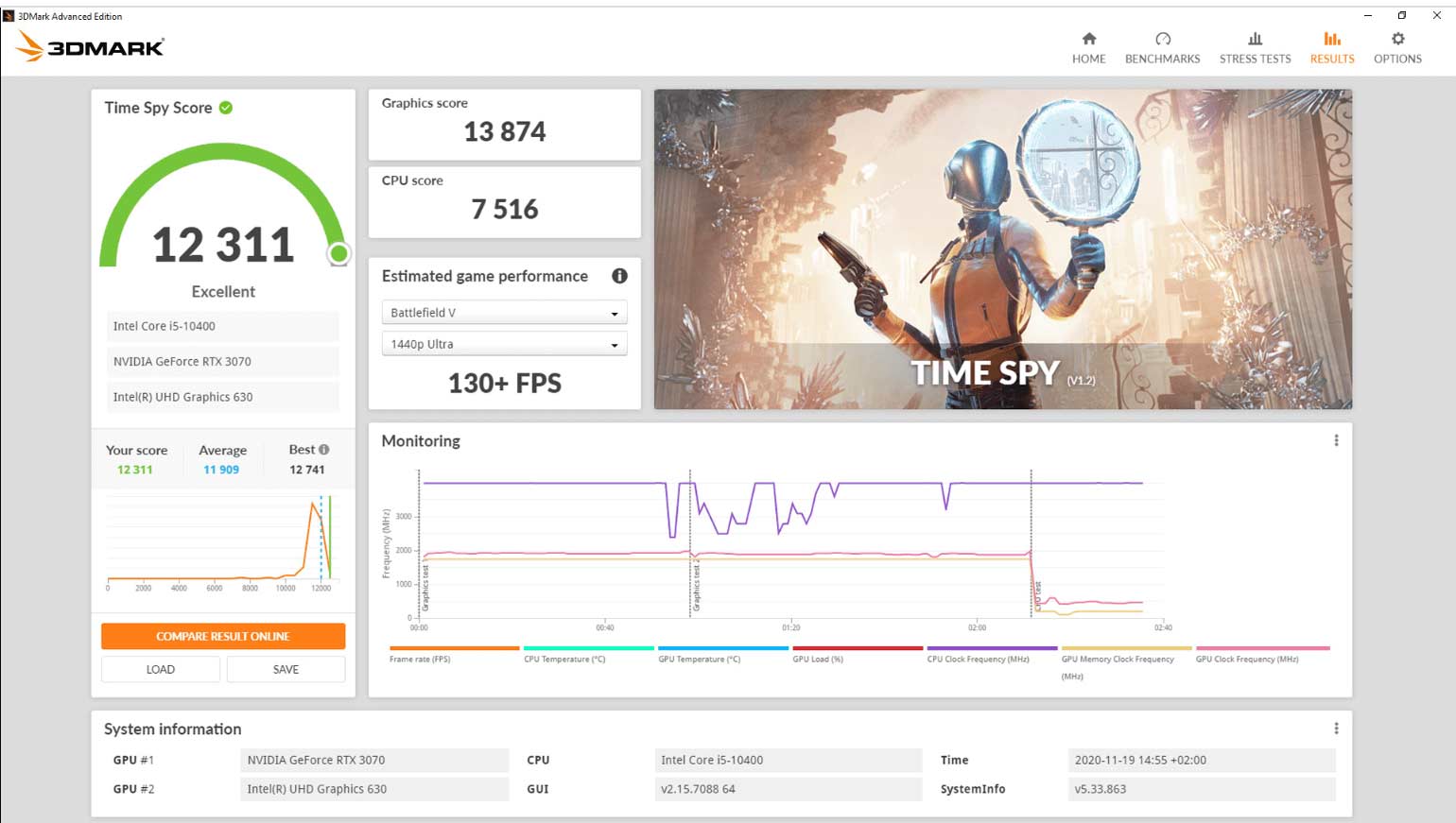
- #Performance benchmark computer install#
- #Performance benchmark computer drivers#
- #Performance benchmark computer update#
- #Performance benchmark computer software#
- #Performance benchmark computer Pc#
It’s a good idea to let Windows settle for a bit. Let the System SettleĪfter you first boot the system, Windows does a lot of stuff–loading services and drivers, defragging the hard drive, reordering applications on the drive, and more. Once you have a clean, updated system, you’re almost ready to start.
#Performance benchmark computer drivers#
Make sure all your drivers are up-to-date as well–particularly the driver for your graphics card, but also the audio driver.
#Performance benchmark computer update#
(You’ll find the control panel link to change Windows Update settings under the ‘System and Security’ heading in Windows 7.)
#Performance benchmark computer install#
After you install the latest Windows fixes, it’s best to disable the Windows Update service. One other major headache is making sure that all needed updates–including Windows patches–are installed.

#Performance benchmark computer Pc#
If this were a new PC on which I’d want to run baseline performance tests, I’d probably uninstall any antivirus or security programs as well (remembering to reinstall them when the machine was back in actual use). In the example shown here, I’d uncheck Microsoft Office, Adobe Updater, all the Logitech crud, the Acronis backup helper apps, and other similar stuff. You can find a lot of stuff that you never knew was running on your PC.You can review your machine’s background items by running msconfig.exe: Open the Start menu, type Run, and then type msconfig in the Run box.
#Performance benchmark computer software#
However, third-party software often installs services and tray applications that use up CPU cycles, ping the network, or occasionally write to storage. You should leave normal Windows services running usually they don’t have a major impact on benchmark results (unless something like a scheduled defrag or backup is occurring). But Windows runs a lot of stuff in the background.

Ideally, you want a clean system for running performance tests. In a perfect world, you want repeatable results, but the architecture of modern operating systems sometimes conflicts with that laudable goal.

Remember the Golden Rule of Benchmarking–use tests that are applicable to what you want to do with your system. If you really want to verify the positive or negative effect of a setting change, though, you need to be patient, and change only one setting at a time before rerunning a test. If you overclock your system, or if you just like to play around with different graphics settings, running benchmarks can give you some idea of the impact of a tweak. If you want to use benchmarks as problem-solving tools, first you need to run some tests while your system is healthy, so that you have a baseline for comparison. That resulted in high enough heat levels that both components throttled back significantly. It turned out that my system’s cooling fans, including the GPU and CPU coolers, had become clogged with dust.

If your cooler gets clogged with dust, it could cause your PC to underclock itself.Once, my PC’s game performance suddenly slowed to a crawl. Whether the game frame rates seem to be slower than before, or the hard-drive performance appears to be declining, or you just get the feeling that the PC has become less responsive, running performance tests can possibly help you spot significant problems. If your system starts to feel sluggish, try running a few performance tests. If you’ve built your own system, though, you’ll probably want to run a few stress tests to confirm that it’s stable at a high performance level before you get started with any serious gaming or other taxing tasks. Today, components are generally more reliable. One of the reasons to burn in a system was to check for early component failure: If all the components survived the burn-in process, they’d likely run for years without issues. It’s my belief that system burn-in isn’t as necessary today as it once was. Whenever I burned in a system this way, I ran both applications simultaneously for 2 to 4 hours. To heat things up a bit, I’d also run the multicore version of Mersenne Prime95 simultaneously, using the benchmark mode of Prime95 that consumes lots of memory bandwidth. In the past I’ve run 3DMark 2006, which allowed you to loop the test ad infinitum. You can use software designed to test a system, but those programs don’t always do a good job of verifying system performance. 3DMark 11When you build a system, you naturally want to test it, to make sure everything works well.


 0 kommentar(er)
0 kommentar(er)
